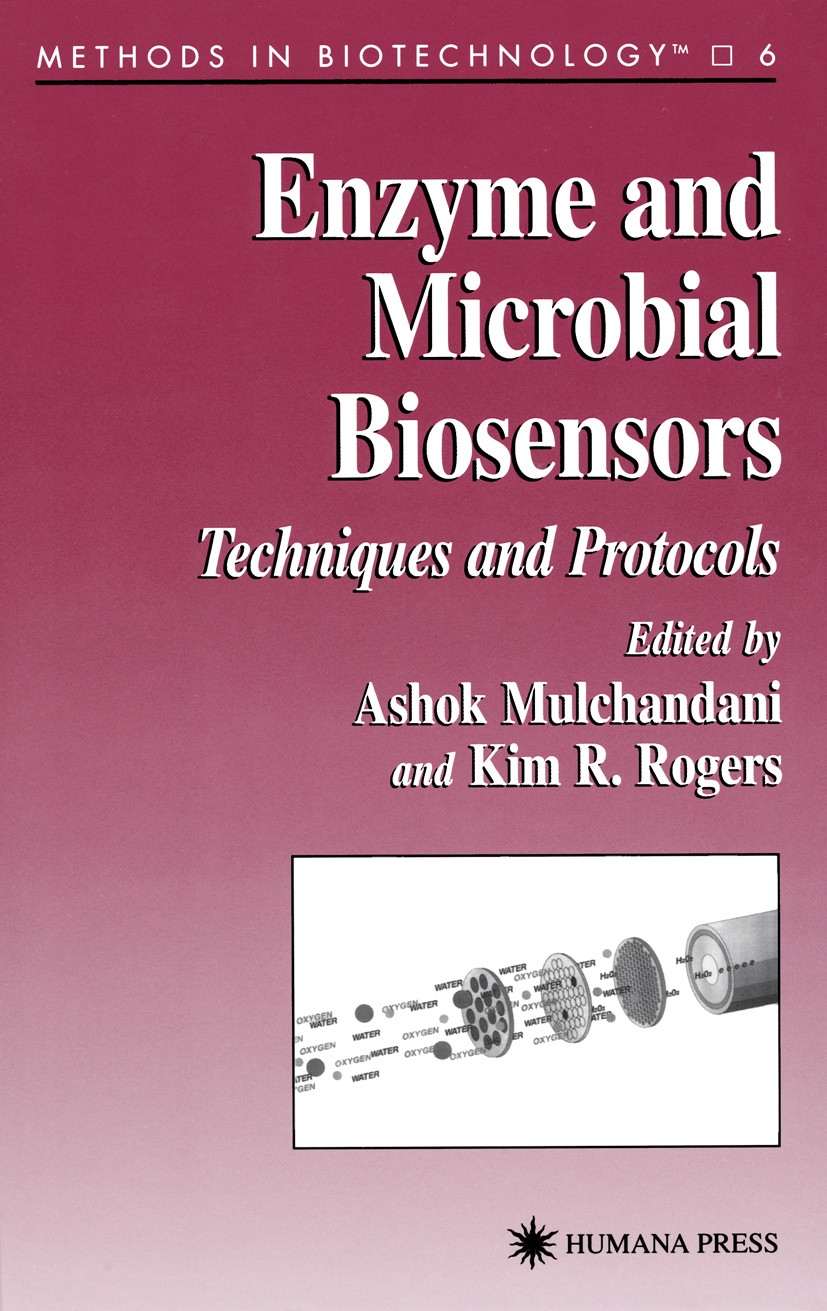| 书目名称 | Enzyme and Microbial Biosensors | | 副标题 | Techniques and Proto | | 编辑 | Ashok Mulchandani,Kim R. Rogers | | 视频video | http://file.papertrans.cn/314/313098/313098.mp4 | | 丛书名称 | Methods in Biotechnology | | 图书封面 |  | | 描述 | In 1962 Clark and Lyons pioneered the concept of a biosensor. They p- posed immobilizing enzymes at electrochemical detectors to form “enzyme el- trodes” in order to expand the analyte range of ther base sensor. Smce then, the field of blosensors has greatly expanded. Some of the reasons for the expansion include both advances in signal transduction technologies and the incorporation of different biological sensing elements (Table 1). As a consequence, there are now a bewildering array of permutations of the biological sensing element and signal transducers that can be used to c- struct a biosensor. The purpose of the two volumes of Protocols and Te- niques in Biosensors is to provide a basic reference tool and starting point for use by graduate students, postdoctoral and senior researchers, and technicians m academics, industry, and government research establishments, to enable rapid entry into the field of biosensors. There are a variety of approaches that researchers employ to select a combination of bioaffinity elements and signal transducers. One commonly used approach is to identtfy the compound or compounds of interest; identify the biological molecule that yields an appropr | | 出版日期 | Book 1998 | | 版次 | 1 | | doi | https://doi.org/10.1385/0896034100 | | isbn_softcover | 978-1-61737-028-1 | | isbn_ebook | 978-1-59259-484-9Series ISSN 1940-6061 Series E-ISSN 1940-607X | | issn_series | 1940-6061 | | copyright | Humana Press 1998 |
The information of publication is updating

|
|
 |Archiver|手机版|小黑屋|
派博传思国际
( 京公网安备110108008328)
GMT+8, 2025-12-29 02:44
|Archiver|手机版|小黑屋|
派博传思国际
( 京公网安备110108008328)
GMT+8, 2025-12-29 02:44


